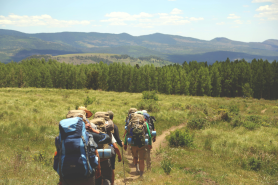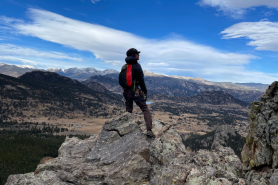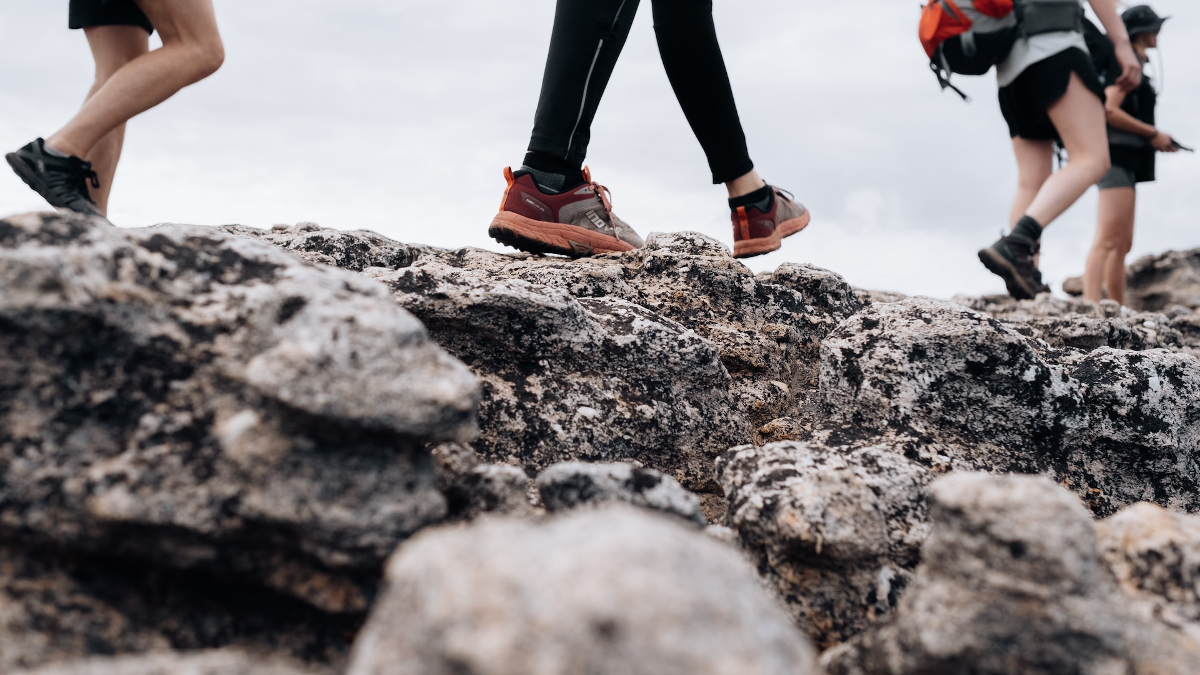

Thousands of thru-hikers hike all over the U.S. every year. These people cover thousands and thousands of miles annually, and they’re often a driving force behind new backpacking gear and new methods for fast, efficient, slow travel. When it comes to footwear, thru-hikers have challenged convention in a big way. Almost none of them wear boots. Almost all of them wear trail runners, and with good reason. These sneakers with rugged tread are a great choice for a lot of hikers. I’ll give you the inside scoop on hiking boots vs. trail runners and why to make the switch.
Videos by Outdoors with Bear Grylls
Hiking Boots vs. Trail Runners: The Weight Differential
When it comes to hiking and backpacking, weight is key. The weight of everything you put in your pack matters. The weight of everything you wear matters. When it comes to what you wear on your feet, weight especially matters. The saying goes, “A pound on your feet is five pounds on your back.” Apparently, this originated with Sir Edmund Hillary and has since been proven true by research. Most hiking boots will be at least one and a half to two pounds, while trail runners are often half a pound each.
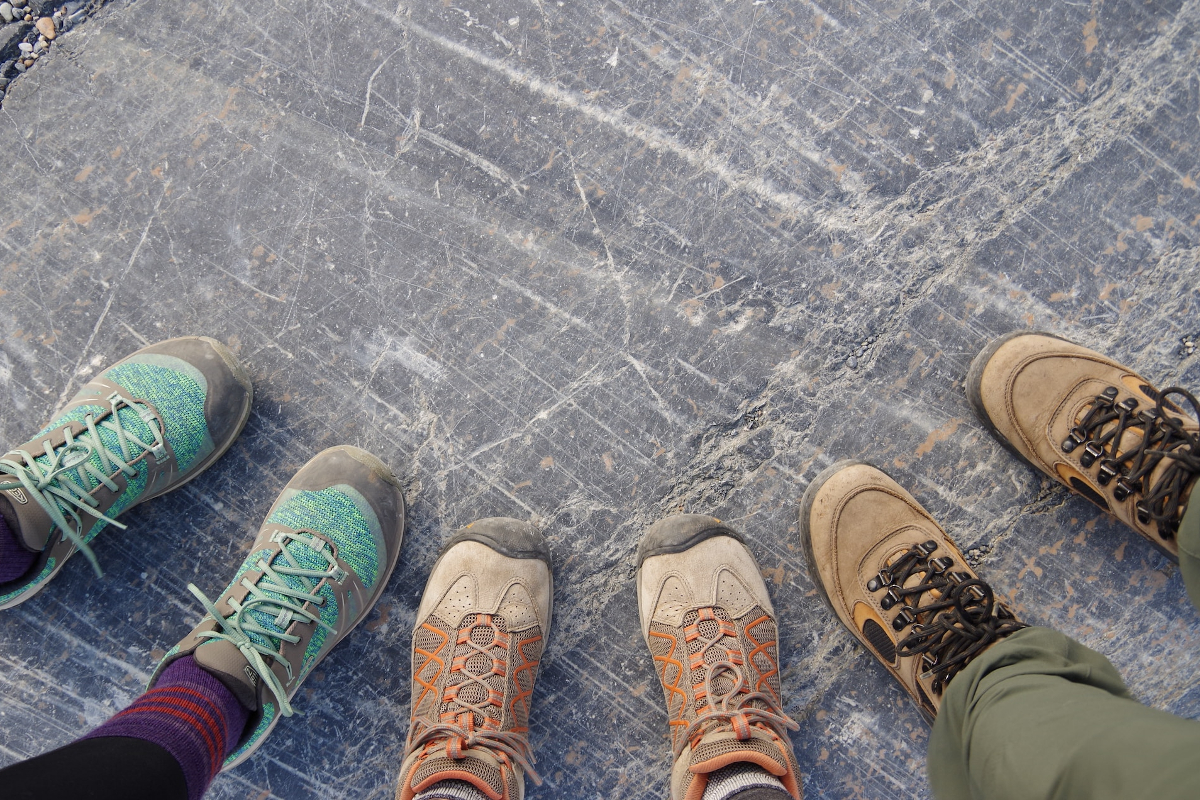
Hiking Boots vs. Trail Runners: The Comfort Factor
There’s nothing more comfortable than an old shoe, as I used to tell my customers in the footwear department. This applies to boots too. It’s not like they’re terribly uncomfortable once you break them in. However, the comfort level of a boot is just not going to match that of a sneaker. Brands like Altra Footwear and Topo Athletic offer wide toe boxes on otherwise regular runners, a natural-feeling niche that is hard to find in boots. The pliability of the material these trail runners are made of is simply less restrictive, pretty well across the board.
Let’s offer some consolation to the boot crowd, though. If you were, say, kicking steps in the snow in an alpine setting, would you want trail runners? Of course not. Sturdy boots that won’t give have their uses and won’t be replaced. Most trail runners have some form of toe guard, too, but boots will always be more secure if you end up kicking a rock. That said, I try to avoid having to kick steps in the snow. On 95% of my hikes, I’m still in trail runners.
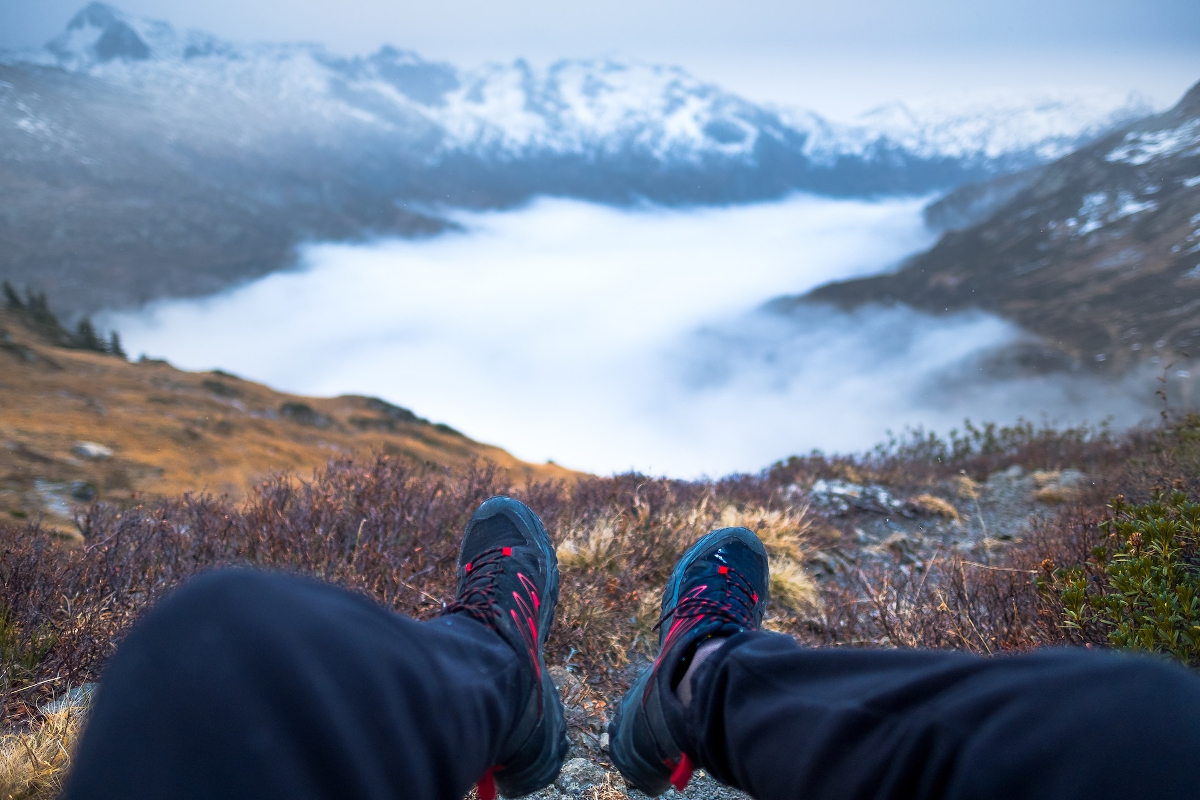
Hiking Boots vs. Trail Runners: The Blister Prevention
What causes blisters? Heat, moisture, and friction. A well-fitted boot shouldn’t cause friction, but you have to hit that sweet spot. Finding the point between sliding around in a too-big boot and rubbing against one that’s too small when your feet swell? It’s tough. Trail runners have a bit more flexibility when sizing. On average, I’d say you have about half a size more of wiggle room. When it comes to breathability, though? Trail runners win out by a landslide. You can find a non-waterproof boot that will breathe, of course, but you won’t air out while hiking as well as in your favorite trail runners.
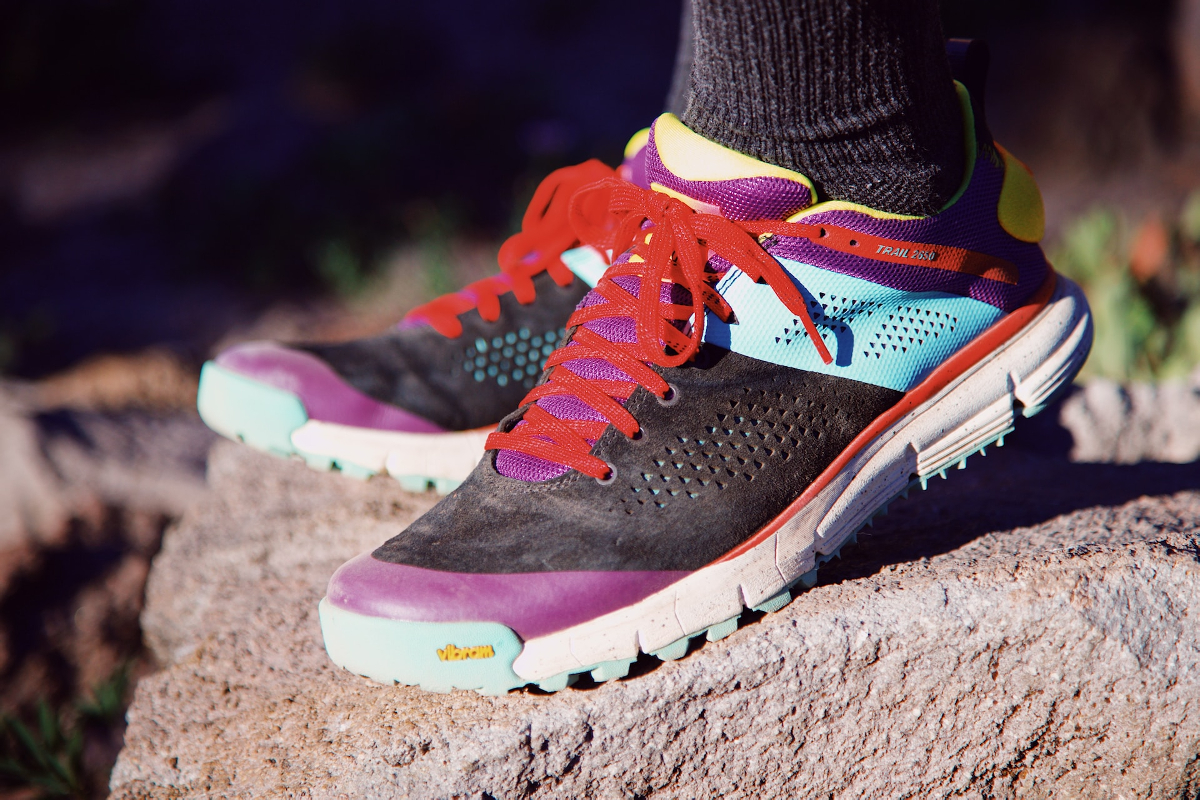
Hiking Boots vs. Trail Runners: The Cushion Spectrum
If we’re talking about cushion in footwear, we have to talk about Hoka. A few years ago, Hoka decided to start making super max cushioned shoes, and they changed the game. If you look at a display wall of shoes, for example, you’ll see all the other brands have started to offer road and trail running shoes with a huge pillow of foam underneath. Nurses love them, teachers love them, people that are on their feet all day. When hiking, high cushion shoes can help in significantly reducing shock to your joints. Moderate cushion trail runners offer some protection with a little more responsiveness, while low cushion trail runners are there for when you want to get scramble-y.
Actually, Hoka also makes some of the only high cushion hiking boots I know about. The cushion spectrum just doesn’t exist in boots in quite the same way. Boots will often have sturdier materials underfoot, which is helpful in stability, but doesn’t preserve your joints quite the same way. I suppose it’s just another reason to go with trail runners.
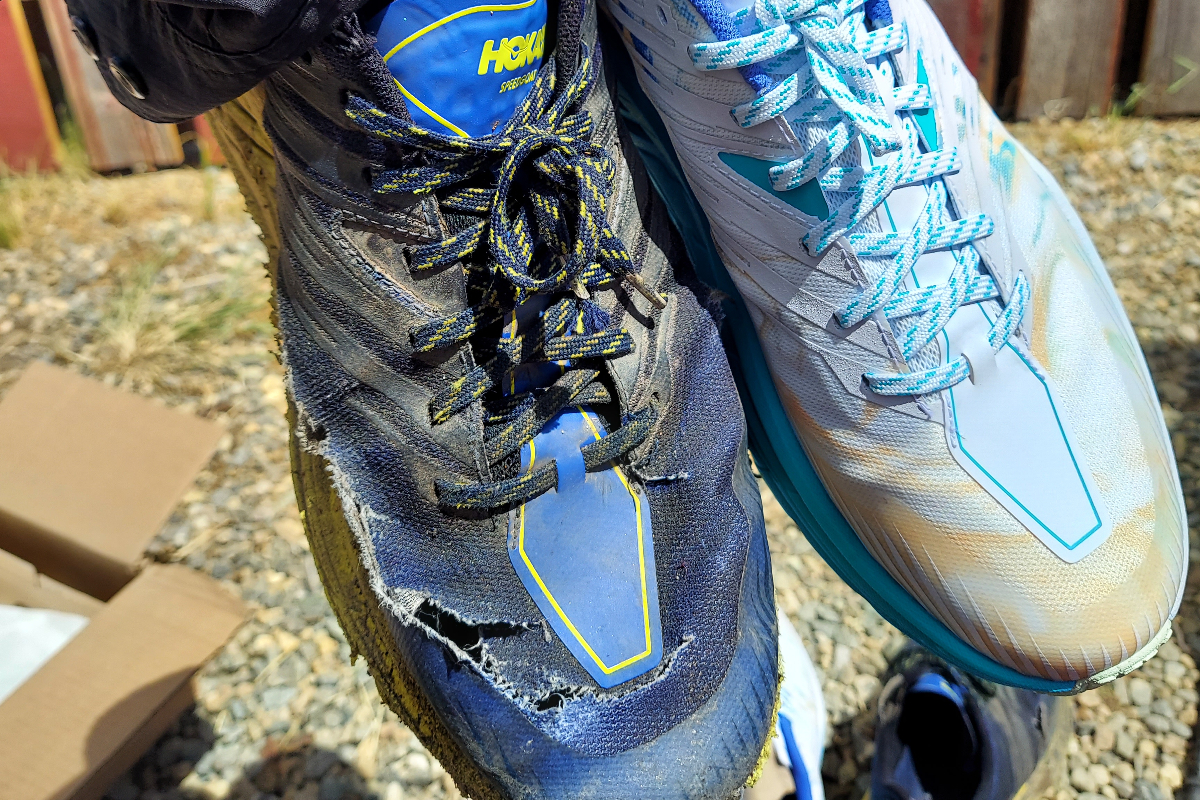
What Are We Sacrificing?
Here’s the catch: durability. When purchasing trail runners, you can expect to get about 500 miles out of them. This comes out to 8-12 months of regular use for most folks, depending on how you use them. Boots, in comparison, can last at least twice that long. Some boots won’t, in the case of shoddy construction or misuse, but a nice, well-made pair of hiking boots could even last a lifetime if you get them consistently resoled. For my money, this is the one factor in which boots definitively win out. I prefer to wear trail runners, but they do have an expiration date. I’ve stretched one pair to around 700 miles, but that’s been the limit.
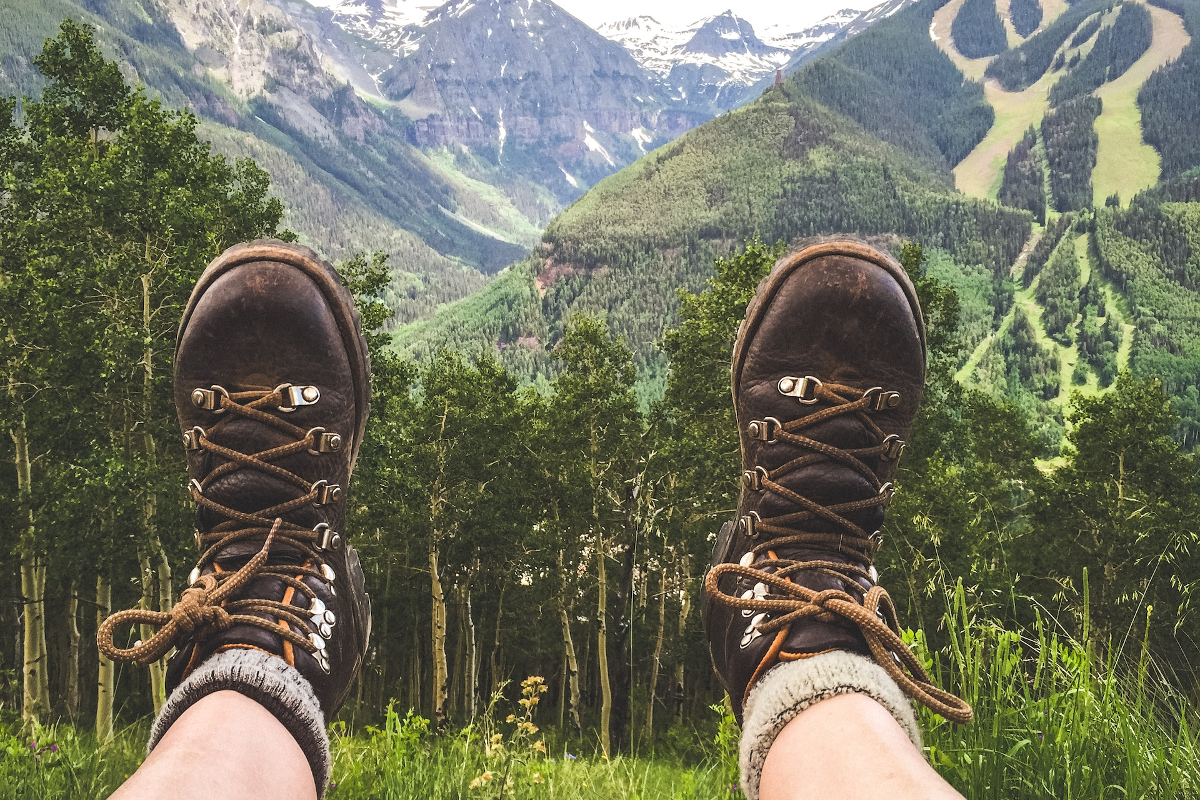
Is Making the Switch Worth It?
Only you can make the final call. Given the breathability factor, when I was peddling hiking shoes in Southern California, I convinced a lot of people to make the switch. In desert regions, there are very few reasons to pick hiking boots over trail runners. In wetter, colder regions, I would more frequently recommend boots. Of course, the aesthetic is also a factor. Trail runners, especially Hoka’s offerings, are often bright, flashy, and loud. If you’re the type of person who’s into psychedelic footwear, maybe that’s your answer. The question is, as always, what’s most important to you?


